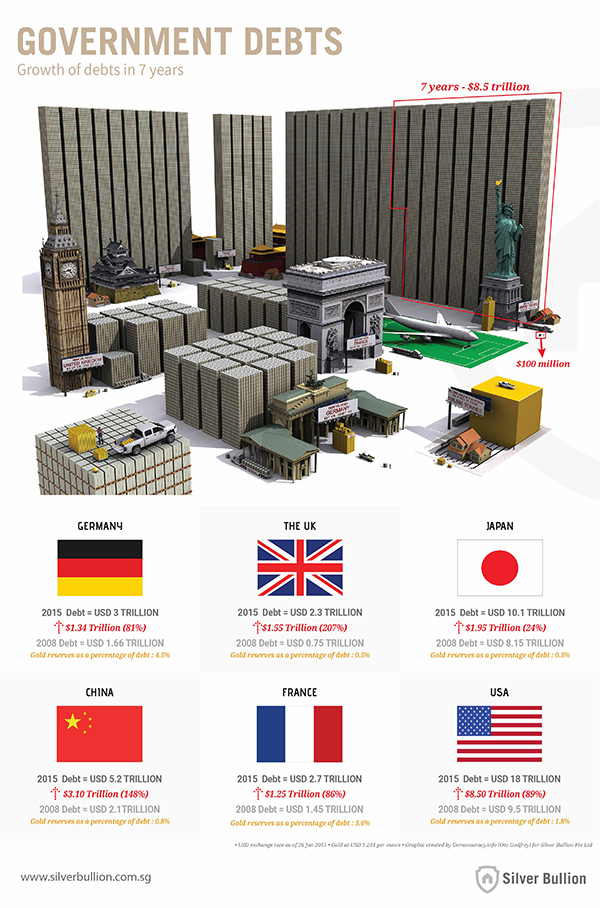Why it all boils down to Counterparty Risk
| In late 2008 I sat in the trading room of a major German bank and witnessed first hand the trader's eerie nervousness as Lehman's default rippled through the financial system. The fear was that a large bank's insolvency can, through its counterparty chains, bankrupt other institutions and thereby cause a self-reinforcing cycle which our overleveraged and undercapitalized banks are ill equipped to survive. Nowadays a major bank default is akin to starting a game of Russian banking roulette, whereby each time a sizable bank default occurs two new bullets are added in the figurative revolver until we run out of defaults or no bank is left standing. KfW Bankengruppe, named "Germany's dumbest bank" by the media caught such a bullet in late 2008 as it transferred 300 million Euros to Lehman Brothers as part of a Euro for Dollar swap agreement on the very same day that Lehman declared insolvency, Leaving KfW in big trouble. So it was no wonder that for a few days in late 2008 the financial system was nearly paralyzed by counterparty fears, as bankers waited to see who would default next and hoped that the public would not lose confidence as well. Quick thinkers however had already eliminated much of their banking counterparty risk and purchased physical gold and silver as a hedge. I was not among the quick and by the time I tried to buy physical bullion myself in late 2008, dealers and banks in Frankfurt were already sold out. Confusingly, silver and gold spot prices at the time kept falling despite the physical shortages, You can read Silver Shortages Explained - How Physical Demand has Little Effect on Prices to understand why this happens. The feared financial Armageddon was ultimately postponed through massive governmental bailouts thereby restoring the banker's fragile faith in each other. Large banks had become "too big to fail" because they owed too much money and governments could not afford this Russian roulette game to run its course. But how expensive were these bailouts and what will happen when the next crisis requires even larger bailouts? Hence the question: Can governments bail out these financial institutions again? Have a look at the vertiginous governmental debt increase since the 2008 crisis: |
 |
As the infographic shows US sovereign debts have nearly doubled from their 2008 levels while the UK managed to triple its public debts burden in these seven short years. The numbers exclude the massive regional/state level debt and the municipal/city level debts which have also skyrocketed. An even bigger budget problem is the lack of funds for pensions and medical promises, these are referred to as unfunded liabilities and, in the case of the USA, are estimated to be a staggering 60 to 100 trillion USD. Watch I.O.U.S.A.: Byte-Sized - The 30 Minute Version - to get a great overview of these problems. So should governments bail out these financial institutions again? A natural response might be "no", but if they do not, you better review your counterparty risks, because by bailing out financial institutions governments also bailed out everyone who had a financial account. Without bailouts you likely would have lost most of your stocks, your bonds, your paper gold and silver, your savings accounts as well as your insurances and other financial instruments. This is why you need to understand counterparty risk. Counterparty risk is created when somebody owes you something (IOU for short), making you a creditor. The entity owing you likely is a creditor itself, thereby creating an extended counterparty risk chain which is part of the very large and complex IOU web, estimated to be over 1 quadrillion USD globally. The most effective way to protect yourself from such counterparty risk is to remove the IOU middlemen and become the direct asset owner yourself. You can store them yourself (DIY) or have an agent who holds your property on your behalf. As an owner your asset could still be forged, stolen or nationalized, but it can no longer be defaulted upon so the legal system will work in your favor and you get to choose which legal system / jurisdiction you want to entrust your wealth to. Keep in mind that even fully allocated bullion storage systems, if they allow for fractional bullion ounces are by definition still IOU based systems and therefore do not provide the systemic protections of ownership. Only uniquely identified physical bullion sold through an invoice in the jurisdiction were it is stored detailing the specific property sold will give you enforceable legal ownership and the associated private property protections. An ownership based storage system requires a lot of planning, hard work and consistency to implement but it is the proper way to address counterparty risk. Furthermore, once well insured and in a trusted jurisdiction it will protect your property against theft, inside jobs, nationalizations and other risks as well. Read about 10 key questions you should consider and to learn more about our efforts and insights over the last 6 years on how to provide the safest store of value in the safest jurisdiction possible. Restoring faith in a post-Lehman financial system has been extraordinarily expensive fiscally (bailouts), monetarily (permanent near-zero interest rates and quantitative easing) and morally (saving inept financial institutions) but the alternative, for most people, would have been a very expensive lesson in counterparty risks and a loss of most of their wealth overnight. These bailouts gave us all a second chance to prepare. Don't let all of your wealth be a liability on somebody else’s balance sheet. Safely own physical assets in a safe and trustworthy jurisdiction, and you will sleep better when the next crisis comes. Gregor J. Gregersen |